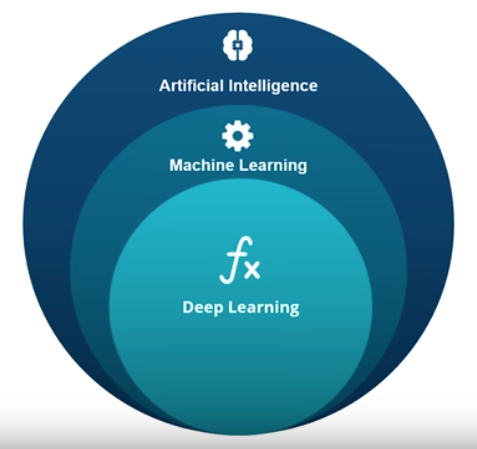
In our ever-advancing technological world, it’s easy to get lost in the sea of terminology. Understanding these words and phrases is essential for business coverage since AI is everywhere.
This post will explain the difference between four computing terms: artificial intelligence, neural networks, machine learning and deep learning. A note before we start: These definitions are drastically simplified to understand the basics.
Artificial Intelligence
Perhaps one of the most used and least understood phrases in recent years, artificial intelligence, or AI, is a sort of blanket term. At it’s most basic, AI is the goal to get computers to perform tasks the same way humans do, through reasoning and learning.
In practice, AI is a computer’s ability to successfully solve problems by learning from past experiences and adapting to new inputs. There is no singular definition of AI because terms like “learning,” “thinking” and “intelligence” are open to some interpretation.
As computers work with more and more data over time, they are able to “learn” by recognizing patterns and comparing current trends with historical experience. Unsurprisingly, computers require more data to analyze and more computing power over time in order to learn more. Computers have been around for decades, and more data is created each day; computers thus have more and more data to learn from.
Artificial intelligence is also a field of study within computer science. The following terms relate to elements of this science as they have developed over time.
Neural Networks
The term “artificial intelligence” was originally used by computer scientist John McCarthy in 1955. At that time, given the available computing power, neural networks were the way that computers started to learn.
Modeled on the human brain, neural networks function by sending information between a series of interconnected nodes. Over time, these networks developed to recognize patterns and classify data. The more data that ran through the network, the more the computer learned.
Neural networks are the fundamental structure used to achieve artificial intelligence. Even as technology progresses, this basic structure remains important.
Machine Learning
By the 1980s, machine learning had emerged as a new method to produce artificial intelligence. Just like neural networks, machine learning is a discipline or field of study within artificial intelligence.
At its most basic, machine learning is a set of instructions, or an algorithm, that coaches the computer through understanding the data it encounters by looking for trends. For example, machine learning algorithms help an artificial intelligence distinguish between pictures of cats, dogs and foxes. The better the algorithm and the more plentiful the data, the easier it is for the computer to learn. A key note here is the human coaching: computers rely on people in order to achieve machine learning.
Machine learning enables seemingly easy things like the “People You May Know” feature on Facebook, and the extraordinary like Waymo, Google’s self-driving car.
Deep Learning
Deep learning is a subset of processes within machine learning. It is more powerful and recognizes patterns in fewer steps than standard machine learning does. Deep learning is also self-teaching: Computers are autonomous, drawing conclusions and recognizing patterns on their own.
Deep learning is on the cutting edge in developing artificial intelligence. In the past decade, data has become plentiful and accessible, and computing power has increased in a way that has enabled deep learning to become very accurate in predicting patterns. In some cases, deep learning algorithms are better at completing tasks than humans are.
With all that said, machine learning (beyond just deep learning) and neural networks are still important in the development of a powerful AI. In fact, neural networks are an essential part of the underlying structure that makes deep learning possible. All three work together to help a computer learn.
Additional Resources
SAS: What is Artificial Intelligence?
Bernard, Marr & Co. : Deep Learning vs. Neural Networks










